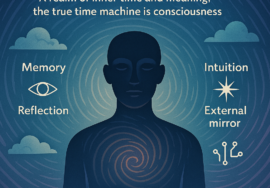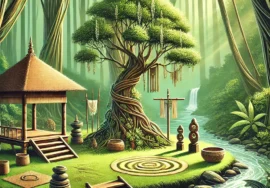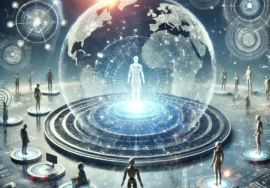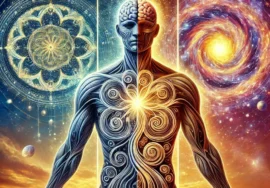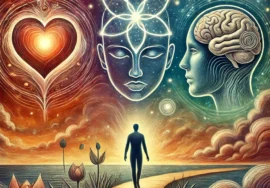©Diripedia – Aligning People with the Universe
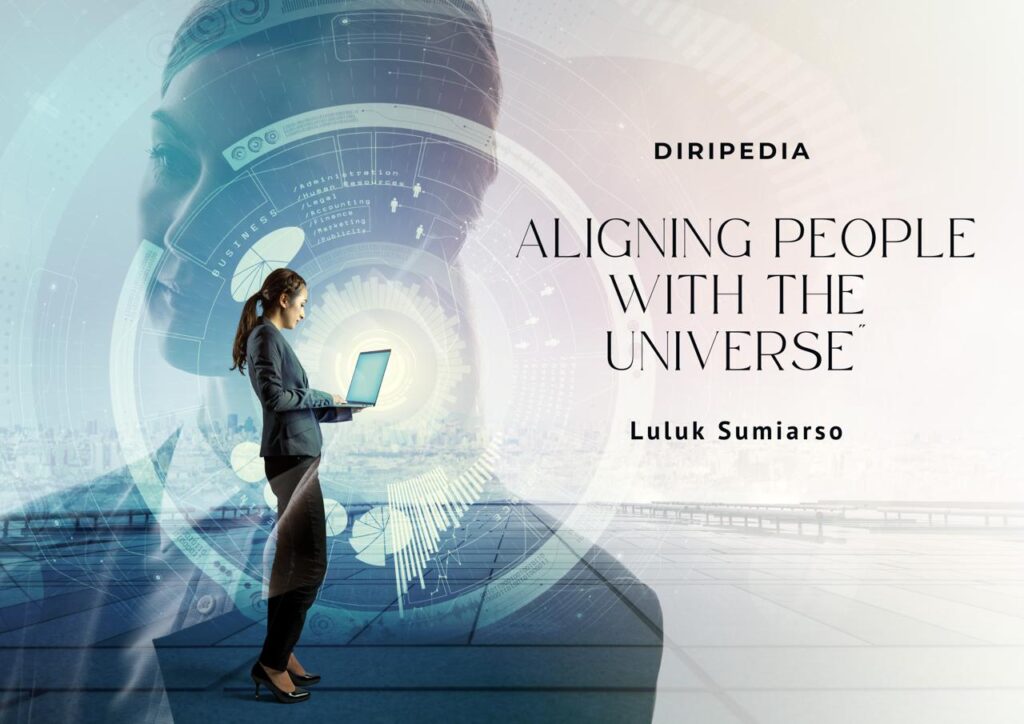
By Luluk Sumiarso
Founder and Chairman of NioD-Indonesia
(The Nusantara Insitute of ©Diripedia)
Introduction
In the age of technological revolutions and interconnectedness, the concept of IoT (Internet of Things) has inspired new ways of understanding relationships within complex systems. IoT, which links physical devices and virtual networks, is just a beginning. Thanks to the IoT Concept, which has inspired NIoD-Indonesia to expand the idea into a broader framework of ‘off-things‘, integrating dimensions beyond the purely physical and digital realms. This expansion has led to the development of the Quadruplet of ©SoT, ©UoT, ©QoT, and ©DoT—a comprehensive model that aligns people with the universe through interconnected knowledge systems.
©Diripedia—a holistic repository of human knowledge and self-exploration—introduces this revolutionary approach: aligning people with the universe. This alignment is explored through four interconnected domains: the Selfnet of Things (©SoT), the Universenet of Things (©UoT), the Quantumnet of Things (©QoT), and the Digitalnet of Things (©DoT). This paper introduces each of these concepts, demonstrating how they work in synergy to align individuals with the larger cosmos, creating a bridge between the self, the universe, and the digital and quantum worlds.
Technology – The History of the Alignment
The alignment between human beings and the universe has been profoundly shaped by the evolution of technology. Over the centuries, technological advancements have redefined the way we interact with the world, the cosmos, and ourselves. This section outlines the history of technological alignment, from its earliest stages to the most advanced digital societies, and projects what lies ahead in the form of Technology 6.0—a Digi-Quantum Advance Society.
- Technology 0.0 – The Pre-Mechanical Era (Before 1800s):
This era represents humanity’s earliest attempts to align with the natural world. Simple tools and techniques were used for survival, from stone tools to early farming techniques. The technology of this period was rudimentary but marked the beginning of humanity’s journey towards manipulating the environment to suit our needs. - Technology 1.0 – The Mechanical Age (1800s-1900s):
The Industrial Revolution marked a profound shift in human history. Steam engines, mechanical looms, and early manufacturing systems revolutionized industries, allowing humans to align more efficiently with natural resources. This era saw the birth of mass production, powered by mechanical innovations, and created the foundation for modern technological growth. - Technology 2.0 – The Electrical Age (1900s-1950s):
The advent of electricity transformed every aspect of human life. This period saw the rise of electrical grids, communication technologies like the telegraph and telephone, and the electrification of homes and industries. This alignment allowed humans to manipulate energy more efficiently and laid the groundwork for the digital age. - Technology 3.0 – The Digital Age (1950s-1990s):
The invention of the computer marked the dawn of the digital era. Computers, the internet, and early digital communication technologies brought about a new form of alignment—digital connectivity. Information could now be processed, stored, and transmitted at incredible speeds, revolutionizing industries, communication, and knowledge dissemination. - Technology 4.0 – The Connected Age (1990s-2020s):
The rise of the Internet of Things (IoT) is the defining feature of Technology 4.0. IoT connects not just people but also devices, machines, and systems across the globe. The advent of mobile technology, cloud computing, and artificial intelligence has created a hyper-connected society, where physical and digital realms merge seamlessly. This alignment of human activity with digital networks has reshaped industries, governance, and personal lives, making connectivity a cornerstone of modern society. - Technology 5.0 – The Most Advanced Digital Society (2020s-2030s):
Technology 5.0 represents the convergence of AI, robotics, machine learning, and the Internet of Everything (IoE). In this era, societies become truly digitally integrated—where AI systems predict and respond to human needs, smart cities optimize resources in real-time, and virtual reality blurs the line between the physical and digital worlds. Technology 5.0 marks the pinnacle of digital integration, where technology not only connects but anticipates and enhances every aspect of human life. - “Technology 6.0” – The Digi-Quantum Advance Society (2030s and Beyond):
Looking forward, “Technology 6.0”, in the perspective of ©Diripedia, projects a future where quantum computing and quantum communication will revolutionize how we understand and interact with both the digital and physical universes. The Digi-Quantum Advance Society will mark a new level of alignment, where quantum processes govern everything from computing to healthcare, security, and beyond. Quantum entanglement may offer unprecedented communication speeds, while quantum algorithms could solve problems that today’s digital systems cannot. In this society, digital and quantum realms converge, creating an era where human knowledge, technology, and cosmic understanding become intricately aligned.
©Selfnet of Things (©SoT)
SoT of Diripedia represents the human microcosm, focusing on the internal systems that define an individual’s physical, emotional, mental, and spiritual dimensions. It reflects the interconnectedness within a human being—how the mind, body, and soul are linked in a web of thoughts, emotions, and actions.
At the heart of SoT lies the Philosophy of ©Trialisme-Diripedia, which conceptualizes the self through three key realities:
- Raga (Physical) – R1: Objective Reality
This dimension refers to the fiscal or physical body, encompassing all that is tangible and observable in a person’s existence. It includes the material world and the physiological aspects of being. - Jiwa (Mental) – R2: Subjective Reality
Jiwa represents the mental realm, which is divided into two distinct subsystems:- R2A – Cognitive: The cognitive reality, governing thoughts, logic, reasoning, and knowledge.
- R2B – Affective: The emotional reality, which encompasses feelings, emotions, and the subjective experiences that shape perception and mood.
- Sukma (Spiritual) – R3: Transcendence Reality
Sukma refers to the spiritual dimension, representing the transcendental reality that connects individuals to a higher state of consciousness and existence beyond the material and mental realms.
Each individual is an ecosystem of these subsystems—physical, cognitive, emotional, and spiritual—and SoT seeks to map and align them. This alignment is essential for achieving inner balance and understanding one’s place within the broader universe.
©Diripedia serves as a guide for individuals to explore and connect with these subsystems through holistic self-awareness, leading to improved well-being, deeper personal insight, and a profound sense of purpose. Through this alignment, individuals can achieve a harmonious relationship with their internal selves, while simultaneously recognizing their place in the interconnected web of the universe.
©Universenet of Things (©UoT)
On a macrocosmic scale, UoT refers to the universal systems that govern the cosmos—ranging from the physical forces of nature to the metaphysical laws that connect everything. The UoT concept explores how everything in the universe is interlinked, whether through visible forces like gravity and electromagnetism or unseen laws of balance and harmony.
In the UoT, human beings are not merely passive participants but active components. The alignment with these cosmic forces requires an understanding of universal patterns, cycles, and energies. ©Diripedia, through the ©UoT framework, offers insight into these cosmic connections, helping individuals understand their position and role in the grander scheme of existence.
©Quantumnet of Things (©QoT)
QoT delves deeper into the quantum realm, focusing on the subatomic forces and particles that underpin all physical reality. Just as IoT connects devices, QoT explores the concept of quantum entanglement and the interconnectedness of all things on a molecular and energetic level.
QoT aligns with the idea that everything, from the smallest particles to the largest galaxies, is part of a unified quantum field. This understanding of quantum relationships provides the foundation for bridging the gap between the physical and metaphysical realms. It expands human awareness of how micro-events on a quantum scale influence the macro-reality of the universe.
©Digitalnet of Things (©DoT)
Lastly, DoT addresses the digital domain, where the physical and digital worlds converge. The rise of on-digitalgrid (connected IoT systems) and off-digitalgrid (independent or non-IoT systems) reflects the expanding influence of technology on human existence. DoT encapsulates this network of devices, data, and systems that have transformed communication, governance, and personal interactions.
As society continues to rely on digital systems for everything from daily activities to global infrastructure, the need for alignment within the digital sphere becomes crucial. ©Diripedia’s DoT framework encourages the responsible and conscious integration of digital technologies into human life, ensuring that these systems support—not detract from—our overall alignment with the universe and our inner self.
Alignment and Holistic Integration
The alignment of SoT, UoT, QoT, and DoT within ©Diripedia creates a comprehensive framework that connects the self, the universe, the quantum realm, and digital technologies. This alignment seeks to harmonize the microcosm (individual) with the macrocosm (universe), recognizing the role of quantum processes and digital systems in this balance.
By understanding and aligning with these different realms, individuals can achieve a more coherent, holistic existence. ©Diripedia provides the tools and knowledge to help people navigate these complex interconnections. The concept of alignment moves beyond simple connectivity, exploring a deeper, more intuitive connection between different dimensions of reality.
Conclusion
The alignment of people with the universe is not just a metaphysical ideal but a practical roadmap for living a balanced and meaningful life in the modern world. ©Diripedia offers a revolutionary framework that incorporates self-awareness (SoT), cosmic understanding (UoT), quantum insights (QoT), and digital integration (DoT) to help individuals harmonize with the forces that shape their existence.
As we move further into the age of advanced technology, the need for this holistic alignment becomes ever more important. Thanks to the IoT Concept, which inspired NIoD-Indonesia to the broader Quadruplet Framework, humanity is now offered a new lens to view their place within the cosmos, fostering deeper connections across all dimensions of reality through ©Diripedia – Aligning People with the Universe. ( More info at www.diripedia.org , or please contact Admin@diripedia.org).
Jakarta, 21 Oktober 2024.


